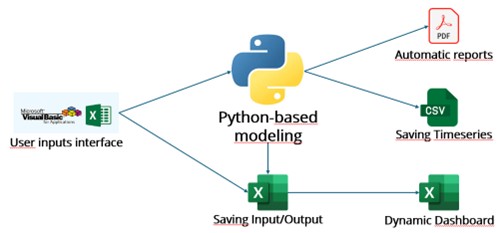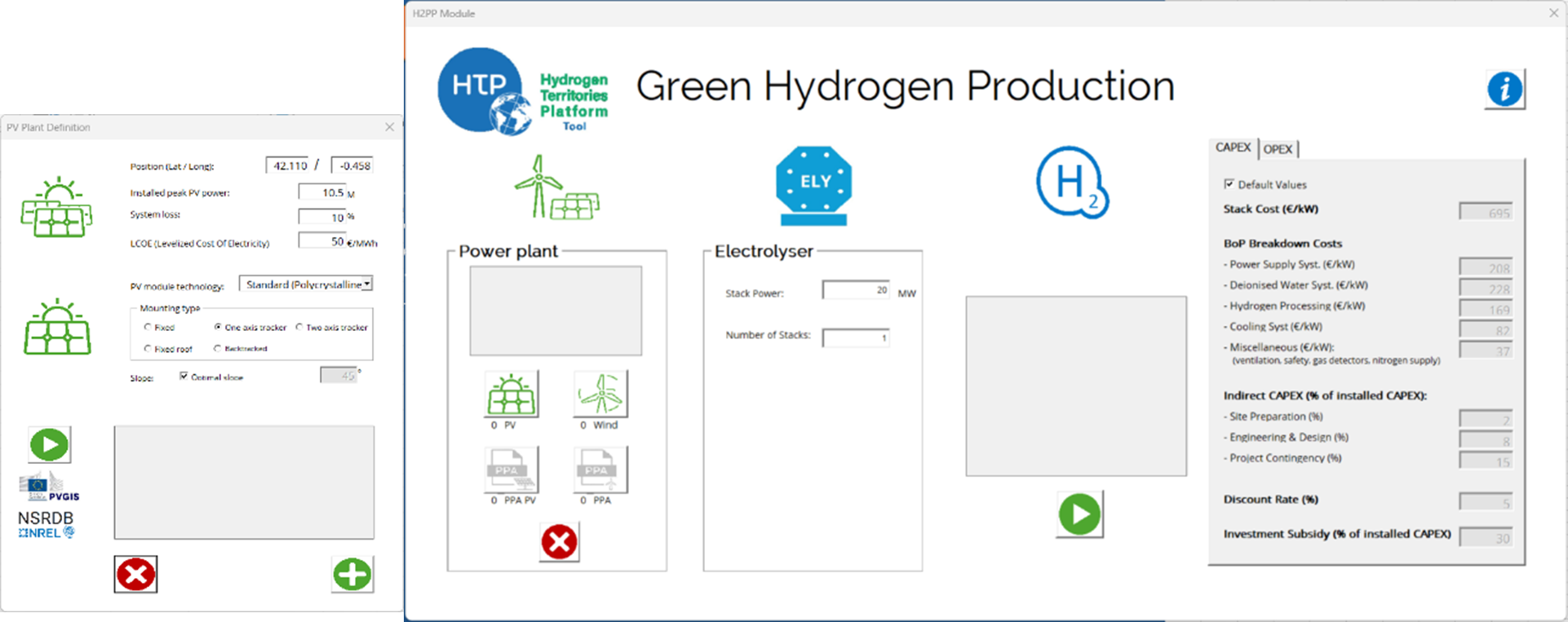Replicability Tool
The HTP Tool is a modeling instrument that has been at the forefront of Aragon Hydrogen Foundation (FHa’s) leadership for several years. It originated as an Excel-based tool within the BIG HIT project and has since evolved to become an essential resource for assessing the integration of hydrogen technologies in specific territories. Its primary purpose is to support public entities and decision-makers in evaluating the feasibility of hydrogen technology adoption in their regions, providing a preliminary techno-economic analysis and business model assessment. This tool plays a critical role in enabling the replicability of the Hydrogen Valley concept across various territories.
Evolution and technical overview
The HTP Tool has continuously evolved within the framework of projects such as GREENHYSLAND, HEAVENN, NAHV, IMAGHyNE, and SH2AMROCK. Initially developed in earlier versions, it has now advanced to Version 1.1, a Python-based tool with a global approach. One of its key objectives is to ensure accessibility for users and ease of interpreting the resulting data. This tool aims to cover all the segments of the hydrogen value chain, offering users the ability to fully simulate a Hydrogen Valley and obtain a techno-economic analysis of it.
 Diagram of the different parts of the value chain, separated into the different modules that make up the tool.
Diagram of the different parts of the value chain, separated into the different modules that make up the tool.
The platform on which the tool is developed is described in the following figure. Although both parameter input and the main dashboard with the results are supported in Visual Basic and Excel, the core of the tool is based on Python modeling. This provides a significant advantage in maintaining a simple, user-friendly visual interface, while also supporting highly complex models that allow for complex algorithms, as well as exporting results in .csv or .pdf.
 Diagram of the platform on which the tool is based
Diagram of the platform on which the tool is based
All modules maintain a very similar structure, both for parameterization and for exporting results, which simplifies user interaction. The green hydrogen production module is illustrated below as an example.
 Interface for parameterizing renewable hydrogen production from a solar panel farm.
Interface for parameterizing renewable hydrogen production from a solar panel farm.
The interactive dashboard of the HTP Tool aims to enhance usability for users and provides a brief summary of the inputs and outputs entered
 Main dashboard with techno-economic results.
Main dashboard with techno-economic results.
Become a member of the Hydrogen Territories Platform through our "Become a member" section!
